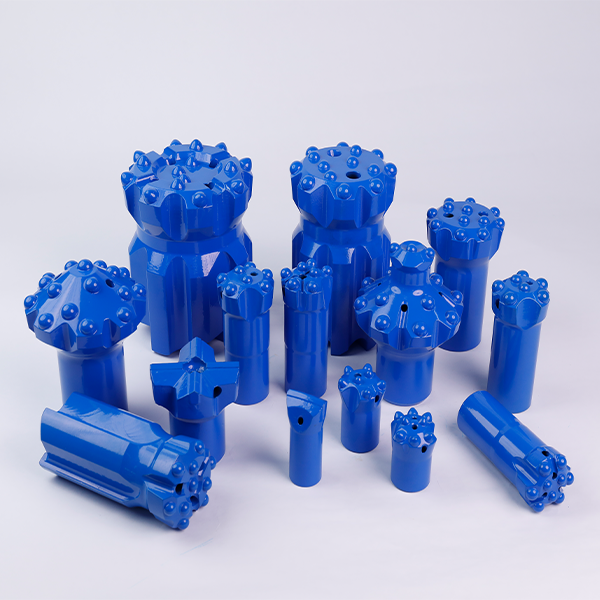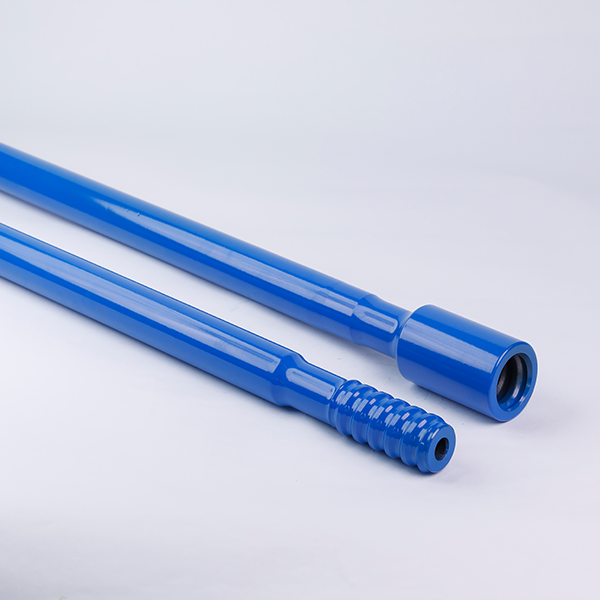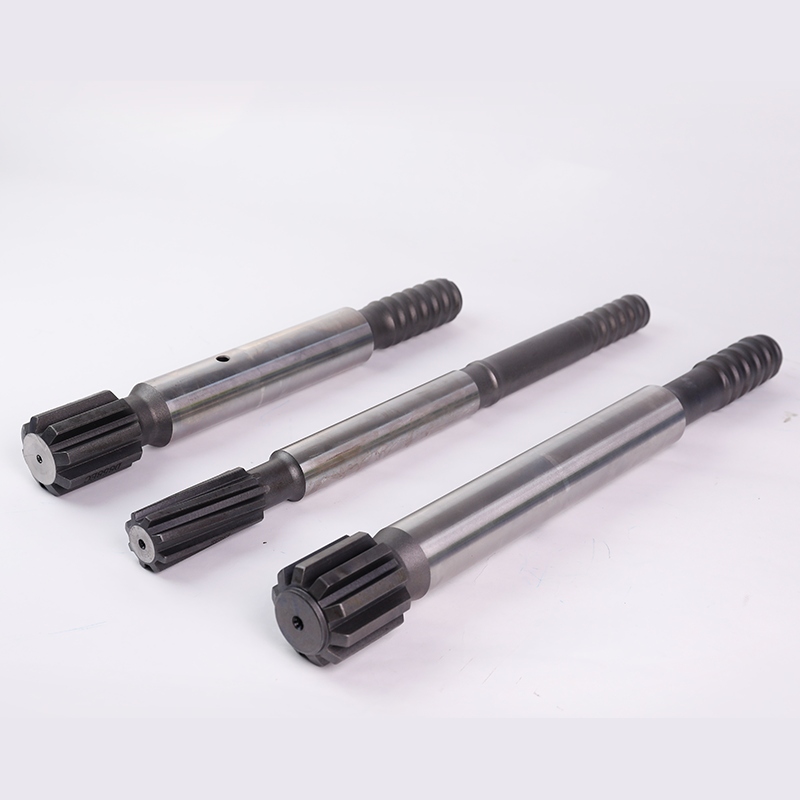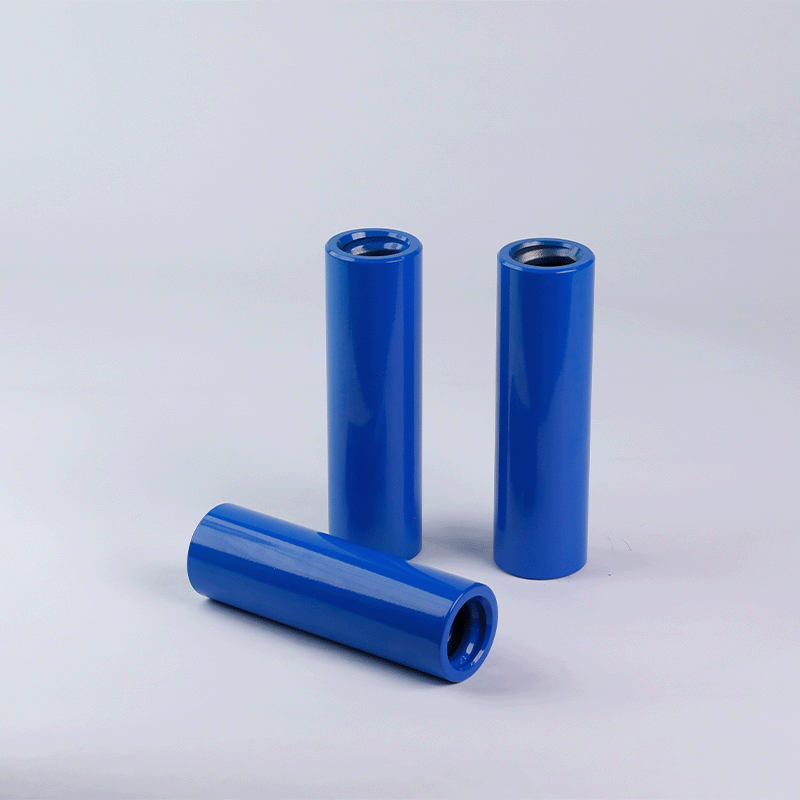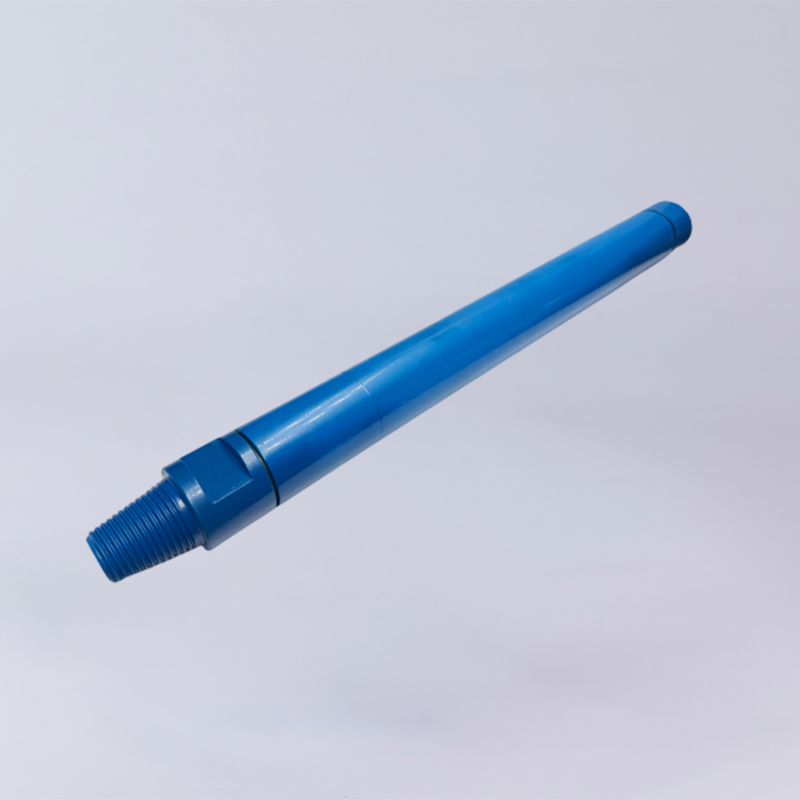In recent years, button bits have developed rapidly in geotechnical engineering fields at home and abroad, becoming widely used drilling tools. Compared with other rock drill bits, they have significant advantages such as high efficiency, durability, and strong adaptability. Many technical engineers believe that the combination of button bits and hydraulic rock drilling rigs can be regarded as the core support for current rock drilling technology. So, what is a button bit? What are its core advantages? How are the product categories divided? How do we make a scientific selection in engineering practice? Today, we will share all this with you.
What is a button bit?
The button bit is made up of a tungsten carbide button inlaid on the drill bit body. Compared with the flake drill bit, the button bit has a free button distribution. According to the drilling hole diameter and the rock-breaking load, the number and position of the edge and middle buttons can be reasonably determined, and the drill bit head diameter is not limited.
And because it is multi-point crushing, the rock-breaking efficiency is higher. It can not only effectively eliminate the blind area of rock-breaking, but also avoid the repeated crushing of cuttings.
In addition, because the abrasion of the alloy column is higher than that of the flake drill bit, its service life is longer, and the regrinding workload is small, which shows a higher value under the operating conditions of mechanized rock drilling rigs and deep hole mining. It is precisely because of these advantages of the button bit, that its application in the construction site will be more and more.
After understanding the definition of the button bit, I will introduce the material composition and common specifications of the button bit.
The materials and specifications of the button bit
Materials and characteristics
- Drill Bit Body: Typically constructed from high-quality steel, the body is engineered to provide optimal strength and toughness, forming the robust structural framework of the tool.
- Carbide Buttons: As the critical core component of button bits, these are manufactured from high-hardness, high-wear-resistant carbide materials. Under the combined forces of impact and rotation, these buttons enable efficient fragmentation of hard rock formations.
- Key Features: Button bits are particularly well-suited for rock drilling equipment with higher impact power, outperforming sheet-shaped insert drill bits in such operational contexts. They deliver superior performance through enhanced rock drilling speeds, extended service life, and produce rounder hole types. Additionally, button bits also have the advantages of long grinding cycles, rapid drilling speeds, reduced manual labor intensity for operators, and the ability to facilitate faster project completion by optimizing drilling efficiency.
Specifications and Applications
- The specifications of button bits are various, and the common ones are 28, 30, 32, 36, 38, 40, 42, 64, 76, 89, and other diameter sizes. They are applied widely in mining, railways, tunnels, highways, and other engineering construction. Especially in quarries, hydropower stations, tunnels, and other projects that require efficient drilling and coring, button bits are indispensable tools.
- It is these design features that give the button bit a significant advantage over other rock drilling tools. These advantages are reflected in many aspects. Let's take a look.
The advantages of the button bit
- Increase drilling speed:The strong impact force and high wear resistance of the button bit enable it to break rocks and soil quickly, thereby increasing drilling speed. Compared with traditional rock drill bits, the button bit can accomplish more drilling tasks simultaneously, greatly enhancing work efficiency.
- Enhanced Drilling Speed:Thanks to their robust impact resistance and superior wear durability, button bits efficiently fracture rock and soil, significantly accelerating drilling operations. Compared to conventional rock drill bits, they can complete more drilling tasks in the same amount of time, delivering a substantial boost in work efficiency.
- Lower Energy Consumption:The high-performance drilling capability of button bits reduces energy demand for drilling equipment. Under identical working conditions, machinery equipped with button bits reaches target depths faster, minimizing both runtime and energy consumption.
- Reduced Worker Fatigue:The streamlined drilling performance of button bits eases the labor burden on operators. Workers can finish tasks more quickly, reducing fatigue from prolonged operations and improving overall workplace comfort.
- Improved Drilling Quality:The unique design of button bits ensures precise and uniform rock/soil fragmentation, resulting in higher-quality drilled holes. Drilling with button bits produces consistent, smoother borehole walls, minimizing issues like collapse or uneven surfaces.
- Cost-Effective Maintenance:The exceptional durability of button bits extends their service life, decreasing the frequency of replacements. This not only cuts equipment maintenance costs but also minimizes downtime and production losses associated with rock drill bit replacements.
Classification of button bits
According to the connection form of the button bit with the drill rod, it can be divided into three types: taper button bit, threaded button bit, and down-the-hole drill bit.
Tapered button bit
The tapered button bit is a kind of rock drilling tool that is inlaid with cemented carbide on the drill bit body and is suitable for the taper of the drill bit body and the drill rod. According to the button fixing process, the products are divided into hot insert process tapered bits and cold pressing process button bits. Products are widely used in mining, tunneling, anchoring engineering, quarrying, and other industries.
Threaded button bit
The threaded button bit is a kind of rock drilling tool that is connected with the threaded drill rod through the drill bit thread to realize the transmission of the impact power and rotational torque of the rock drill to break the rock. It is often used with the hydraulic drilling rig. It is mainly used in underground mining, open-pit mining, and blast furnace openings in steel mills and other fields.
DTH drill bit
The DTH drill bit is connected to the DTH hammer through splines. The skirt body is made of high-quality alloy steel that has undergone strict heat treatment, which gives them good hardness, wear resistance, and impact resistance. The tungsten carbide buttons are installed at the head of the rock drill bit through the cold or hot insert. Usually, this kind of drill bit is used combined with the DTH hammer to drill rock. According to the shape classification, the DTH drill bits can be divided into the flat face, drop center, and semi-dome.
Based on our understanding of these three types of button bits, we have initially grasped the respective application scenarios for button bits classified by their connection methods with drill rods. Then, apart from these scenarios, how should we select the appropriate button bits for different rock formation conditions?
How to select the button bits?
There are many classification methods for button bits, and we prefer the one that chooses a button bit according to the type of carbide buttons. I will share it with you through the carbide buttons type form.
|
Carbide Buttons Type |
Application |
Advantage |
Apply to rock |
|
Hemisphere Button |
Universal Carbide |
Good abrasion resistance |
Very suitable for hard rock; |
|
Semi-Ballistic Button |
Universal Carbide |
Button entry speed is fast |
Very suitable for medium hard rock; Suitable for moderately corrosive rock strata |
|
Conical Insert |
Mostly used for small diameter bit |
Button entry speed is fast |
Applicable to non-corrosive rock strata |
Notice:Generally, the more edge button, the better overall performance, especially in hard rock conditions.
When choosing a button bit, in addition to referring to the table above, some critical factors to evaluate include the hardness of the rock formation, drilling depth requirements, and overall construction costs. Meanwhile, during use, button bits are subjected to wear and impact forces, necessitating regular maintenance and upkeep to sustain optimal performance.
Maintenance typically involves checking the wear of the rock drill bit, replacing severely worn buttons, cleaning the dirt on the surface of the rock drill bit, etc. Proper upkeep and routine maintenance not only extend the service life of the button bit but also enhance drilling efficiency, ensure consistent productivity in construction projects
Conclusion
As a vital tool in drilling engineering, the selection of button bit type and its performance characteristics holds significant importance for ensuring construction efficiency and quality. Gaining a comprehensive understanding of the various types of button bits and their characteristics is crucial for the precise selection and effective utilization of button bits. In practical applications, it is essential to choose the appropriate button bit type based on specific conditions, such as drilling requirements and project objectives, to achieve optimal drilling effect.
Enterprises want to improve economic efficiency and operational efficiency, in addition to choosing the correct rock drill bit, the most important thing is to choose a supplier that can provide excellent quality products, because the rock drill bit quality directly affects the construction progress.
If your business has product needs or seeks to optimize drilling with high-quality button bits, contact us for details. Kelleg delivers corresponding products and tailored services to meet your engineering needs effectively.

